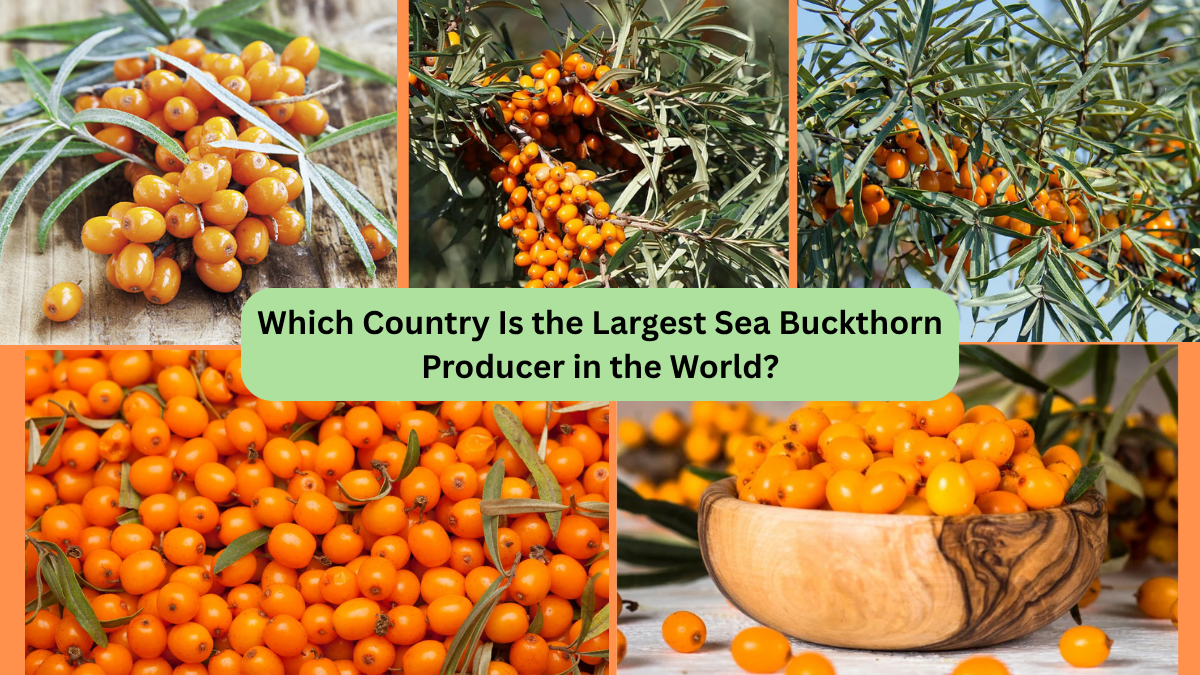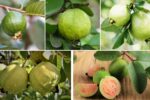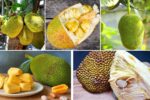Bright orange berries dotting thorny shrubs—sea buckthorn (Hippophae rhamnoides) is a distinctive super‑berry prized in nutrition, cosmetics, and environmental restoration. But behind its growing global appeal lies a clear leader in production: China. Let’s explore why China dominates this sector, with ~90% of the world’s total acreage, and how the fruit is cultivated, processed, and gaining international attention.
What Is Sea Buckthorn?

Native to cold-temperate Eurasia, sea buckthorn is a dioecious, nitrogen-fixing shrub found in regions from Scandinavia to the Tibetan Plateau primaryinfo.com+5researchgate.net+5credenceresearch.com+5en.wikipedia.org+4en.wikipedia.org+4fao.org+4. Its clusters of vitamin-rich orange berries—rich in vitamins C, E, K, essential fatty acids, antioxidants, and minerals—make it a sought-after functional food, cosmetic ingredient, and health tonic primaryinfo.com.
China: By Far the World’s Biggest Producer

Massive Cultivation Footprint
- **Total tree coverage:**About 3 million ha worldwide, with 2.5 million ha in China alone—1 M ha wild, 1.5 M ha planted en.wikipedia.org.
- **Planting momentum:**Around 10,000 ha added annually in China for fruit production and erosion control en.wikipedia.org.
These areas dwarf planting efforts in any other country, making China the undisputed global leader.
Production & Processing Ecosystem
- By the early 1980s, sea buckthorn plantations and processing were established nationwide researchgate.net+14primaryinfo.com+14mdpi.com+14.
- Over 200 processing factories produce more than 100 product types—juices, oils, cosmetics, supplements, even fabric dyes pmc.ncbi.nlm.nih.gov+3primaryinfo.com+3sanglobalresearch.com+3.
- Functioned as an official beverage for Chinese athletes at the 1988 Seoul Olympics fortunebusinessinsights.com+2mdpi.com+2primaryinfo.com+2.
Ecological Roles & Breeding Innovation
- The plant’s rapid growth, root depth, and nitrogen-fixing abilities make it ideal for soil conservation, reforestation, and even windbreaks mdpi.com+13fao.org+13pmc.ncbi.nlm.nih.gov+13.
- A FAO-backed genetic program since the 1980s in China facilitated field trials across its natural range, optimizing seed sources and biodiversity fao.org.
Market Dominance
- China controls approximately 45% of the global sea buckthorn market, with the broader Asia-Pacific region (China, India, Mongolia) holding nearly half of production and consumption mdpi.com+9credenceresearch.com+9sanglobalresearch.com+9.
How China Compares to Other Producers
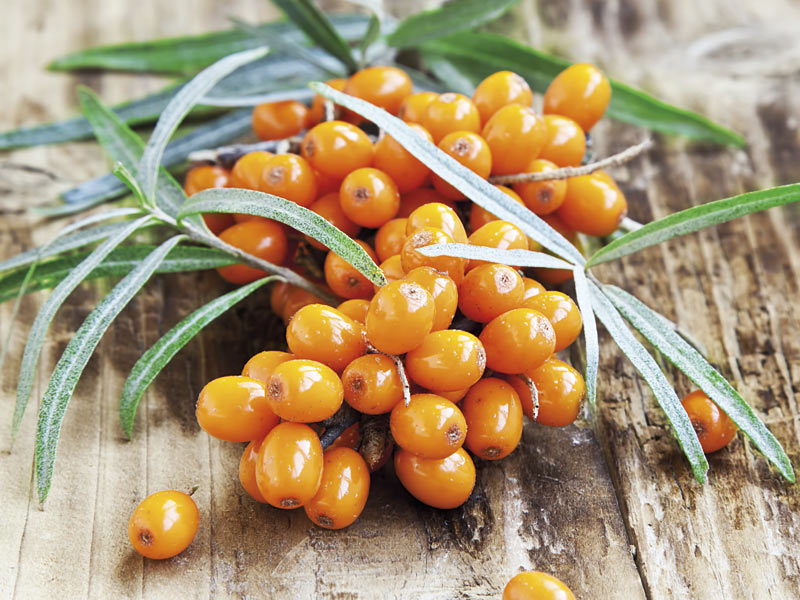
| Country/Region | Sea Buckthorn Area & Context |
|---|---|
| China | ~2.5 M ha of wild & cultivated shrubs; processing infrastructure en.wikipedia.org+1fao.org+1 |
| Mongolia | ~20,000 ha cultivated |
| India (Himalayas) | ~12,000 ha (Ladakh, Himachal Pradesh, Sikkim) |
| Pakistan | ~3,000 ha in Himalayan regions |
| Russia, Europe | Smaller scale commercial efforts with emerging product lines |
| Canada | ~250,000 plants across prairies; 750 t/year yield |
China’s cultivated area and processing capacity dwarf efforts elsewhere—often by factors of 10 or more.
Why China Leads
- Land Resources & Climate — Large cold‑temperate zones suit sea buckthorn’s growth needs, making land reclamation economically beneficial.
- Institutional Support — Government-backed programs, harvest incentives, and R&D investments have fostered large-scale cultivation and processing.
- Diverse Product Innovation — Juice, oil, cosmetics, supplements, food—China’s industry offers over 100 consumer and industrial products reddit.com+15primaryinfo.com+15en.wikipedia.org+15credenceresearch.com.
- Ecological Benefits — Combines environmental restoration with economic gains, encouraging large planting projects.
- Export Momentum — China exports to Europe, North America; development in GI tagging (e.g., Ladakh sea buckthorn) boosts future growth fortunebusinessinsights.com.
Health Benefits & Market Trends
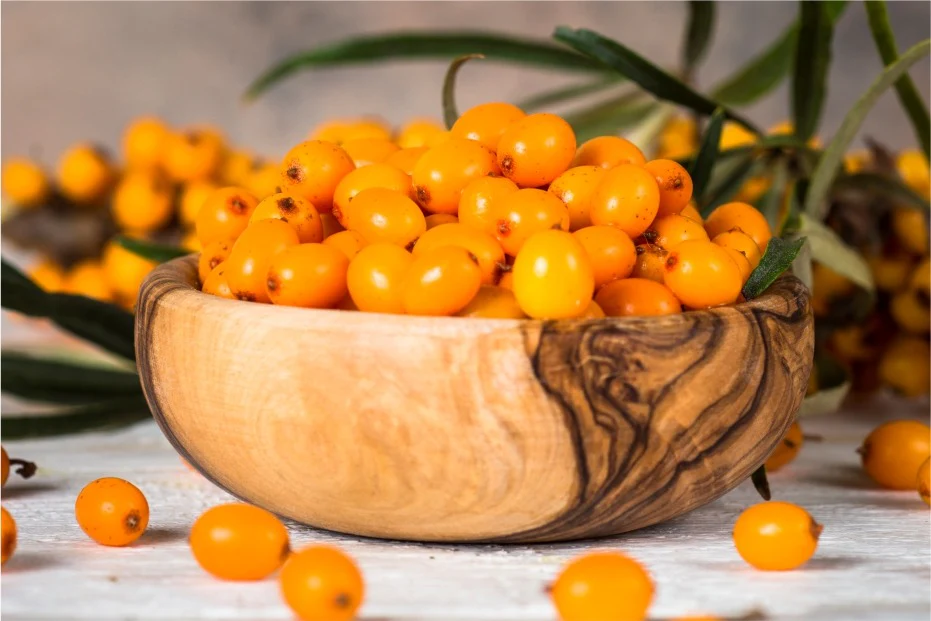
- Nutritional powerhouse: Berries contain up to 400 mg vitamin C/100 g, plus carotenoids, antioxidants, essential fatty acids, and minerals en.wikipedia.org.
- Therapeutic validations: Research shows anti-inflammatory, cardiovascular, anti-ulcer, wound-healing, and liver-protective effects reddit.com.
- Growing demand: Rising interest in functional foods, natural cosmetics, and eco-friendly farming boosts the sea buckthorn market—expected to grow steadily into 2032 fortunebusinessinsights.com+4credenceresearch.com+4fortunebusinessinsights.com+4.
Challenges & Opportunities
Challenges:
- Harvest & processing complexities due to small berry size and delicate handling requirements .
- Seasonality limits continuous supply—frozen products and extracts help fill gaps.
- Geographic disparities—remote plantations challenge logistics and market integration.
Opportunities:
- Value-added extracts—oils, powders, teas, cosmeceuticals, functional beverages.
- Eco-tourism and branding—sea buckthorn can be a flagship species for land restoration and community development.
- GI protection for regional varieties (like Ladakh’s), enhancing premium market access primaryinfo.com.
- Global partnerships—EU, Canada, and U.S. labs develop processing and product tech with Chinese counterparts.
Final Verdict

So, which country is the largest sea buckthorn producer in the world? The answer: China—a clear leader by acreage, production infrastructure, and processing capacity. With ~2.5 million ha under cultivation (plus wild stands), hundreds of factories, cutting-edge research, and multi-industry supply chains, China provides approximately 90% of the world’s sea buckthorn production .
While countries like India, Mongolia, Russia, and Canada contribute meaningfully—especially in niche and regional markets—China’s scale, innovation, and ecological integration set the global benchmark.
